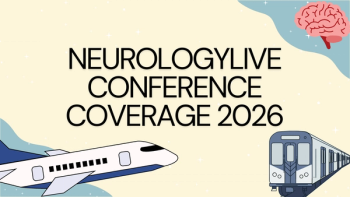
Multiple-Source Constant-Current DBS Shows Safety, Efficacy at Long-Term Follow-Up
As a result of treatment with the Vercise Genus DBS system, patients reduced their use of anti-parkinsonian medications while maintaining improvements in quality of life.
New follow-up results from the INTREPID randomized controlled trial (NCT01839396) showed that treatment with deep brain stimulation (DBS) capable of multiple independent current control (MICC) was safe and effective for treating patients with Parkinson disease (PD) for up to 4 years.1
The results, presented at the
Led by
The system consists of a group of Bluetooth-enabled implantable pulse generators (IPGs) that power Cartesia Directional Leads, designed to provide optimal symptom relief. Furthermore, the Vercise Genus system is the fourth generation of the DBS system since 2012 and operates in tandem with the Brainlab platform to offer enhanced visualization for clinicians to see lead placement within the context of each patient’s segmented target anatomy.
READ MORE:
In the double-blind portion of the trial, conducted between May 2013 and November 2017, 313 enrolled patients were enrolled across 23 sites. Of these 313 patients, 196 (63%) received the DBS implant, 191 (61%) were randomly assigned, and 160 were included in the 3-month interim analysis. During that period, both patients and the assessors were masked to the treatment group while the unmasked programmer was responsible for programming and optimization of device settings. Of those included, 121 (76%) were randomly assigned to the active group and 39 (24%) to the control group.
From the baseline visit to 3 months post randomization, results showed a difference in increased ON time without troublesome dyskinesia of 3.03 hours (SD, 4.52; 95% CI, 1.3-4.7; P <.0001). During that time, investigators reported 26 serious adverse events (AEs) in 20 (13%) patients. Of these, 18 events were reported in the active group and 8 in the control group. Notably, one death was reported among the 196 patients before randomization, which was deemed unrelated to the procedure, device, or stimulation.2 At 1-year compared to presurgery screening, a 49.2% improvement in UPDRS-III scores were reported, and overall improvement in quality of life was maintained.3
When the first results of INTREPID were released,
He added that this "is really the only trial that was double-blind and randomized with a sham control. It's the only one that was done. So really, it offers a unique data set, class I evidence for sure, and kind of one of a kind right now. You're really not going to find a study like this funded by the NIH right now because of the fact that it's expensive. But the companies want to get their device in the market, so as a scientist I'm kind of loving it that I can get into this study and company's going to pay for it, and we can do some unique things with the studies."
REFERENCES
1. Vitek J, Chen L, Jain R, Starr P. Long-term evaluation of deep brain stimulation for treatment of Parkinson disease using a multiple-source, constant-current system: a 5-year follow-up of a prospective, double-blind RCT. Presented at: 2022 AAN Annual Meeting; April 2-7; Seattle, Washington. Abstract 0876
2. Vitek JL, Jain R, Chen L, et al. Subthalamic nucleus deep brain stimulation with a multiple independent constant current-controlled device in Parkinson's disease (INTREPID): a multicentre, double-blind, randomized, sham-controlled study. Lancet Neurol. 2020;19(6):491-501. doi: 10.1016/S1474-4422(20)30108-3
3. Vitek J, Jain R, Chen L, Starr P. INTREPID: A 2-Year Follow-Up of a Prospective, Double Blinded, Multi-Center Randomized Controlled Trial Evaluating Deep Brain Stimulation with a New Multiple Source, Constant-Current Rechargeable System for Treatment of Parkinson’s Disease. Mov Disord. 2019;34(suppl 2)
Newsletter
Keep your finger on the pulse of neurology—subscribe to NeurologyLive for expert interviews, new data, and breakthrough treatment updates.




























